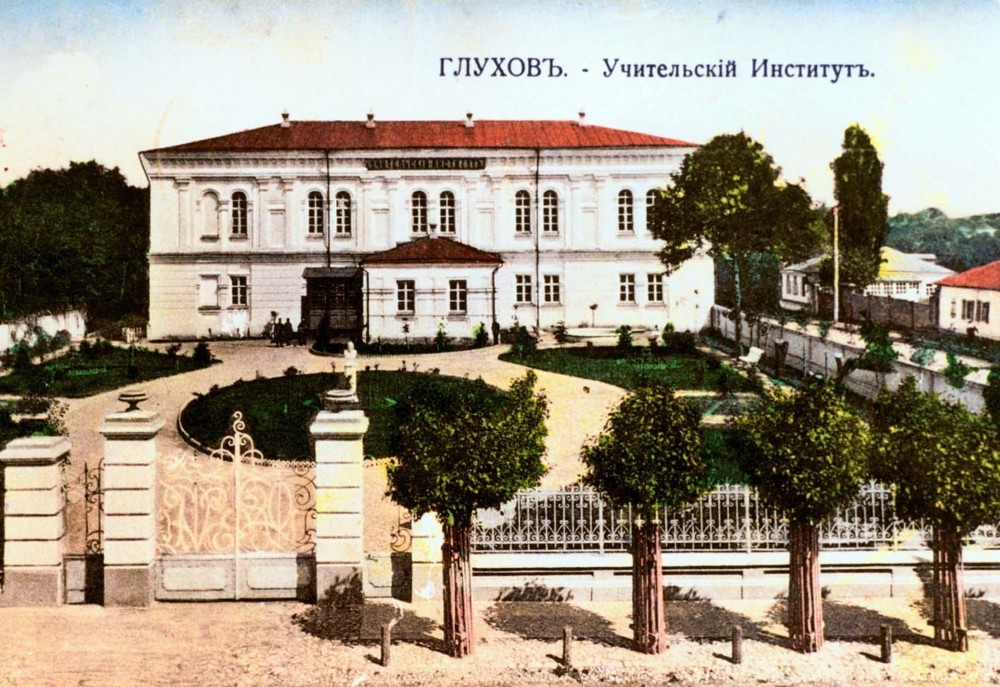
The study of the history of the development and activity of educational institutions of different form and status makes it possible to more effectively investigate the issue and determine, at the same time, similar and distinctive features in their functioning and characteristics. An important role is played by carrying out, in particular, a comparative characterization of the social status and standard of living of the teachers of these institutions. In particular, in our research, a comparative analysis was conducted of the Hlukhiv Men’s Gymnasium and the Hlukhiv Teacher’s Institute, which over time received the name of the Hlukhiv State Pedagogical Institute). These educational institutions functioned in Hlukhiv, Sumy Oblast, from the 1870s to 1917. A four-grade male high school was opened in Hlukhiv in 1870. In 1873, after the visit to Hlukhiv by the Minister of National Education of the Russian Empire, Dmitri Tolstoy, with the support of the then leadership of Hlukhiv, a decision was made to open a teachers’ institute in Hlukhiv the following year. The document we found “Announcement from the authorities of the Kyiv educational district” reports on the foundation of the teachers’ institute in the 1874-1875 academic year. In 1875, the pro-gymnasium became a sixth-grade school. In 1889, this educational institution received the status of a classical eight-grade gymnasium. The director of the gymnasium, Mykola Lazarenko, paid considerable attention to the improvement of the high-quality composition of the institution. Oleksandr Belyavskyi, the first director of the institute, also played a significant role in improving the quality of teachers at the teachers’ institute. During his leadership, the institute was imbued with the spirit of pedantry and monumentality of pedagogical sciences. Over time, the Hlukhiv Men’s Gymnasium became a kind of cultural and educational center of the region, where a large number of graduates of various higher education institutions were able to teach. In particular, ten graduates of the Nizhyn Institute of Prince O. Bezborodko, who graduated from the historical and philological field, worked there during different periods of the educational institution’s operation. Another ten people from the University of St. Volodymyr in Kyiv, five from the Imperial Moscow University, three graduates from the Hlukhiv Teachers’ Institute and six from the University of St. Petersburg. There was also one person who graduated from the medical faculty of Yuriy University, three teachers from the Theological Academy and two more from the Chernihiv Theological Seminary and the Novorossiysk Theological Academy. Both in the men’s gymnasium and in the teachers’ institute, there was a clear and strict regulation of the hiring of teaching staff. According to the rules of the educational system of the Russian Empire at that time, persons who graduated from a higher education institution (university, academy or institute) received the VIII class. But graduates of secondary education institutions lower than IX or X classes. Also, for example, in ten years of teaching it was possible to go from VIII to VI grade. A vivid example of this system was, for example, teachers of the grammar school V.A. Malchenko, P.A. Adamov and A.K. Nikolaev. They alternately passed the classes: collegiate assessor, court adviser, collegiate registrar and state adviser. The Hlukhiv Teacher’s Institute has always been equipped with highly qualified teachers. According to the legislation, the salary of the teachers of the Hlukhiv Male Gymnasium depended on various factors. However, the salary at the Hlukhiv Teachers’ Institute was lower. Under such conditions, the employees of the Hlukhiv Teacher’s Institute tried to get a job at the gymnasium, in particular, the male one. Thus, as a result of the processing of statistical data, we came to the conclusion that the salary of the teachers of the Hlukhiv Men’s Gymnasium and the Hlukhiv Teacher’s Institute, in particular, at the beginning of the 20th century ranged from 1300 to 3000 rubles. for a year. These were relatively the highest indicators among the salaries of teachers of institutions corresponding to the levels of general secondary education and professional preliminary education according to the current legislation. Due to the fact that the city of Hlukhiv was a small county town at that time, the prices based on the types of goods were somewhat mediocre. In this regard, the teachers of these educational institutions had a fairly high standard of living. Gymnasium teachers (mostly all of them graduates of higher education institutions) were considered officials and had a number of privileges. The salary of the teachers of the Hlukhiv Men’s Gymnasium was quite high and ranged from 1,350 to 2,100 rubles per year. This amount consisted of the salary, as well as a number of additional payments: for additional lessons, checking written works, etc. At the same time, the amount of salary of the teachers of the teachers’ institute with a similar amount of additional payments and years of service was 10-30% lower, which indicates a higher social status, and, of course, the socio-economic level of teachers of the gymnasium in comparison with the status presentation Chiv Teacher’s Institute.
Source: Ashchaulova T.A, Hrytsenko A.P. (2022). Comparative characteristics of the social status and standard of living of teachers of the Gluhiv male high school and the Gluhiv teaching institute in the 1870s – 1900s. Sumy Historical and Archival Journal. XXXIX: 16-24
Source web-site: https://shaj.sumdu.edu.ua/wp-content/uploads/2023/01/3_Ashchaulova_Hrytsenko.pdf
Number of views: 1548